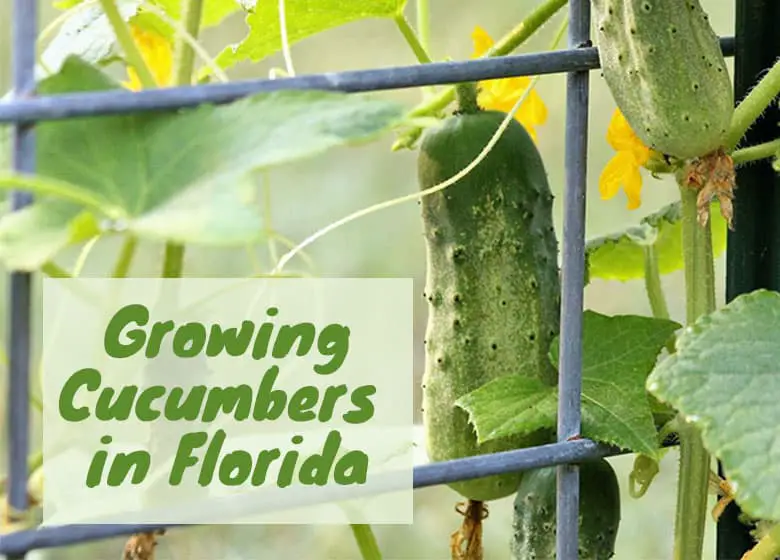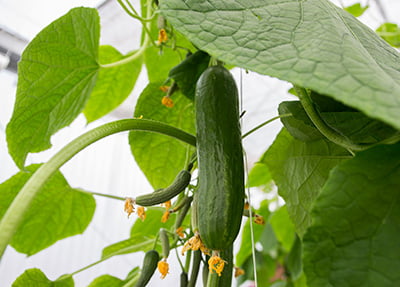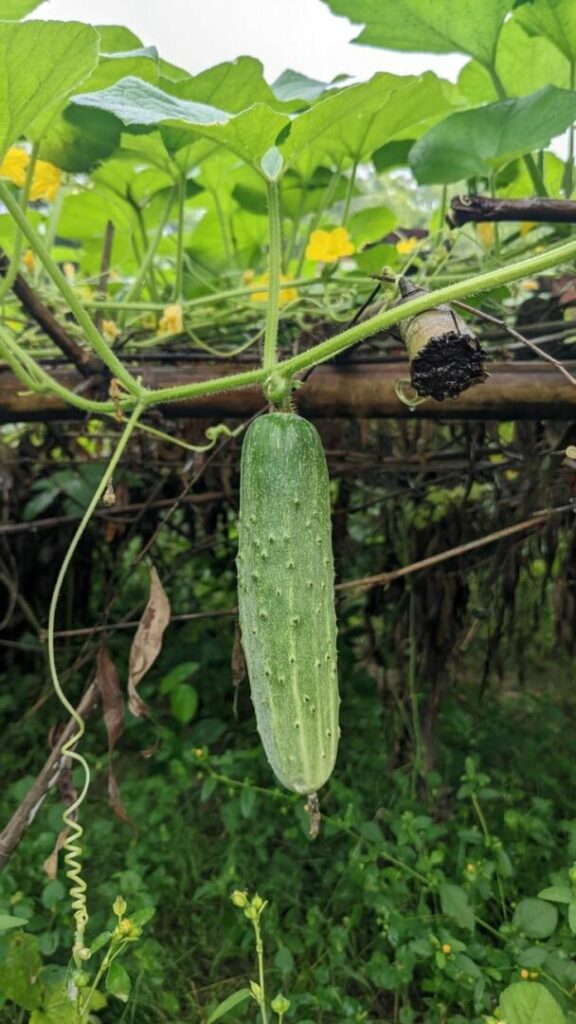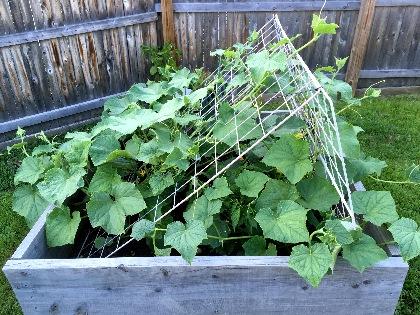So you’re considering planting cucumbers in North Florida, but you’re not sure when the best time to do so is? Look no further! In this article, we’ll give you all the information you need to know about when to plant cucumbers in North Florida. By understanding the ideal planting season, you can maximize your chances of a successful cucumber harvest and ensure that your garden thrives in this specific region. Whether you’re an experienced gardener or a beginner, this article will provide you with the knowledge you need to get started on your cucumber-growing journey.

Factors to Consider
When it comes to planting cucumbers in North Florida, there are several factors that you need to consider. These factors include the climate, soil conditions, and the seed variety.
Climate
The climate in North Florida is characterized by warm temperatures and moderate rainfall throughout the year. This makes it an ideal region for growing cucumbers. However, it is important to consider the specific planting times for each season to ensure a successful harvest.
Soil Conditions
Another important factor to consider when planting cucumbers is the soil conditions. Cucumbers thrive in well-drained soil that is rich in organic matter and has a slightly acidic pH level between 6 and 7. It is crucial to prepare the soil properly to create a favorable environment for cucumber plants.
Seed Variety
Choosing the right seed variety is also essential for a successful cucumber harvest. There are different types of cucumbers available, such as burpless, pickling, and slicing varieties. Additionally, you have the option of selecting hybrid or heirloom seeds. Each variety has its own unique characteristics, so it is important to choose the one that suits your preferences and growing conditions.
Planting Cucumbers in Spring
Spring is a great time to start planting cucumbers in North Florida as the temperatures begin to warm up. Here is a month-by-month guide for planting cucumbers in the spring season.
March
In March, you can start preparing the soil for planting cucumbers. Clear the area from any debris or weeds and amend the soil with compost or well-rotted manure. Test the pH levels of the soil and adjust it if necessary. Once the soil is ready, you can sow cucumber seeds indoors or directly in the garden if the temperatures allow.
April
As April rolls around, it is time to sow cucumber seeds directly in the garden. Prepare the planting area by creating mounds or rows to provide adequate drainage. Space the seeds according to the recommended spacing for the specific cucumber variety you are planting. Cover the seeds with a thin layer of soil, water gently, and apply mulch to retain moisture.
May
In May, continue to care for your cucumber plants by watering them regularly, providing support for vining varieties, and monitoring for pests and diseases. As the temperatures rise, make sure to mulch around the plants to keep the soil cool and retain moisture. Regularly fertilize the plants as needed to promote healthy growth and maximum yield.

Planting Cucumbers in Summer
During the summer months, the temperatures in North Florida can get quite hot. Here is a guide on planting cucumbers in the summer season.
June
In June, the temperatures are at their peak, so it is important to take necessary precautions when planting cucumbers. Start by preparing the soil following the same steps mentioned earlier. Sow the cucumber seeds directly in the garden, making sure to provide plenty of water to keep the soil moist. Consider offering some shade to protect the young plants from excessive heat.
July
July in North Florida often brings hot and humid weather conditions. Make sure to maintain a consistent watering routine for your cucumber plants, providing them with enough moisture to withstand the heat. Regularly check for pests and diseases and take appropriate measures to control them. Consider providing additional shade to prevent sunburn on the fruits.
August
As August arrives, the temperatures typically start to cool slightly, providing relief for both the plants and gardeners. Continue to water your cucumber plants regularly and monitor their growth. Harvest ripe cucumbers as they appear to encourage continuous fruit production. Consider planting a second round of cucumbers to extend your harvest season.
Planting Cucumbers in Fall
Fall is an ideal season to plant cucumbers in North Florida as the temperatures begin to cool down. Here is a month-by-month guide for planting cucumbers in the fall season.
September
In September, prepare the soil for planting cucumbers by clearing the area and amending the soil with compost or well-rotted manure. Test the pH levels and adjust it if necessary. Sow cucumber seeds directly in the garden, ensuring proper spacing and depth. Water the seeds gently and apply mulch to help retain moisture.
October
As October arrives, continue to care for your cucumber plants by watering them regularly, providing support for vining varieties, and monitoring for pests and diseases. The cooler temperatures of fall create an ideal growing environment for cucumbers. Ensure that your plants receive adequate sunlight and maintain a consistent watering routine.
November
In November, as the temperatures continue to drop, it is important to protect your cucumber plants from frost. Consider covering them with a frost cloth or bringing them indoors if necessary. Harvest any remaining cucumbers before the first frost to avoid damage. Use this time to prepare your garden for the upcoming winter season.

Preparing the Soil
Before planting cucumbers, it is crucial to prepare the soil properly. Follow these steps to ensure a favorable growing environment for your cucumber plants.
Clearing the Area
Start by clearing the planting area from any debris, weeds, or previous plant residues. This will help prevent competition for resources and reduce the risk of pests and diseases.
Amending the Soil
After clearing the area, amend the soil with compost or well-rotted manure to improve its fertility and structure. This will provide the necessary nutrients for your cucumber plants’ growth and ensure good drainage.
Testing pH Levels
It is important to test the pH levels of the soil before planting cucumbers. Cucumbers prefer a slightly acidic pH level between 6 and 7. If the pH level is too high or low, use appropriate amendments to adjust it accordingly.
Tilling and Raking
Once the soil is properly amended and tested, till it to loosen any compacted areas and create a fine tilth. Rake the surface of the soil to remove any clumps or large stones. This will provide an ideal seedbed for your cucumber seeds or transplants.
Choosing the Right Seed Variety
Choosing the right seed variety is essential for a successful cucumber harvest. Consider the following options when selecting cucumber seeds.
Burpless
Burpless cucumbers are known for their mild and easy-to-digest qualities. They are less likely to cause digestive discomfort or burping. If you enjoy eating cucumbers fresh or adding them to salads, burpless varieties are a great choice.
Pickling
If you love pickles and want to make your own at home, pickling cucumber varieties are the way to go. These cucumbers have a firm and crisp texture, perfect for pickling and preserving. Pickling cucumbers are typically harvested when they are small in size.
Slicing
Slicing cucumbers are the most common variety found in grocery stores. They are ideal for slicing and adding to sandwiches, salads, or eating plain. Slicing cucumbers come in different sizes, so choose the one that suits your needs.
Hybrid vs. Heirloom
When selecting cucumber seeds, you will come across both hybrid and heirloom varieties. Hybrid cucumbers are bred for specific traits, such as disease resistance or improved yield. Heirloom cucumbers, on the other hand, are open-pollinated and have been passed down through generations. Consider your preferences and gardening goals when choosing between hybrid and heirloom seeds.

Starting Cucumber Seeds Indoors
If you want to get a head start on your cucumber garden, you can start cucumber seeds indoors before transplanting them outside. Here is a guide on starting cucumber seeds indoors.
Using Seed Trays or Pots
Start by filling seed trays or pots with a well-draining seed starting mix. Sow the cucumber seeds according to the recommended spacing, usually around 1 inch apart. Gently press the seeds into the soil and cover them with a thin layer of additional soil.
Providing Adequate Light
Place the seed trays or pots in a location where they can receive plenty of sunlight. If natural sunlight is limited, consider using grow lights to provide adequate light for seed germination and subsequent growth. Cucumber seedlings require approximately 14-16 hours of light per day.
Maintaining Optimal Temperature
Cucumber seeds require warm temperatures for germination, around 75-85°F. Use a heating mat or maintain a warm environment to provide the consistent temperatures needed. Once the seedlings have emerged, maintain temperatures around 65-75°F during the day and slightly cooler at night.
Direct Sowing Cucumber Seeds
Direct sowing cucumber seeds is a common method for planting cucumbers. Follow these steps for successful direct sowing.
Preparing the Planting Area
Choose a sunny location in your garden for planting cucumbers. Prepare the soil by following the steps mentioned earlier, including clearing the area, amending the soil, testing pH levels, and tilling the soil.
Creating Mounds or Rows
Create either mounds or rows to plant your cucumber seeds. Mounds provide improved drainage for heavy soils, while rows allow for easy maintenance and harvesting. Space the mounds or rows according to the recommended spacing for the specific cucumber variety.
Spacing and Depth
Sow the cucumber seeds at the recommended spacing and depth for the variety you are planting. Typically, cucumber seeds are sown around 1 inch deep and 6-12 inches apart, depending on the variety. Cover the seeds with a thin layer of soil.
Applying Mulch
After sowing the cucumber seeds, apply a layer of organic mulch, such as straw or wood chips, around the plants. Mulch helps retain moisture in the soil, suppresses weed growth, and regulates soil temperature. Ensure that the mulch is not directly touching the cucumber stems to avoid moisture-related diseases.

Watering and Care
Proper watering and care are crucial for the health and productivity of cucumber plants. Follow these guidelines to ensure optimal growth.
Establishing a Watering Routine
Cucumber plants require consistent moisture throughout the growing season. Water the plants deeply, providing enough water to saturate the root zone. Aim to keep the soil evenly moist, but not waterlogged. Avoid overhead watering to prevent the spread of fungal diseases.
Mulching to Retain Moisture
Mulching around cucumber plants helps retain soil moisture by reducing evaporation. Apply a layer of organic mulch, such as straw or wood chips, around the plants. This will also help suppress weed growth and regulate soil temperature.
Providing Support for Vining Varieties
Some cucumber varieties are vining in nature and require support for optimal growth. Install trellises, stakes, or plant along a fence to support the vines. This will help keep the fruit off the ground, prevent disease, and save space in your garden.
Fertilizing as Needed
Cucumber plants benefit from regular fertilization to promote healthy growth and maximize yield. Apply a balanced fertilizer, such as a 10-10-10 or 14-14-14, according to package instructions. Avoid over-fertilizing, as this can lead to excessive foliage growth at the expense of fruit development.
Monitoring for Pests and Diseases
Regularly monitor your cucumber plants for signs of pests and diseases. Common pests include cucumber beetles, aphids, and spider mites. Treat infestations promptly using organic methods or appropriate insecticides. Preventative measures, such as crop rotation and proper sanitation, can help reduce the risk of diseases.
Conclusion
Planting cucumbers in North Florida requires considering the climate, soil conditions, and selecting the right seed variety. With proper planning and care, you can enjoy a bountiful cucumber harvest. Whether you choose to plant in spring, summer, or fall, follow the recommended guidelines for each season. Prepare the soil, choose the appropriate seed variety, and provide the necessary care throughout the growing season. With these tips in mind, you’ll be well on your way to growing delicious cucumbers in your North Florida garden.



